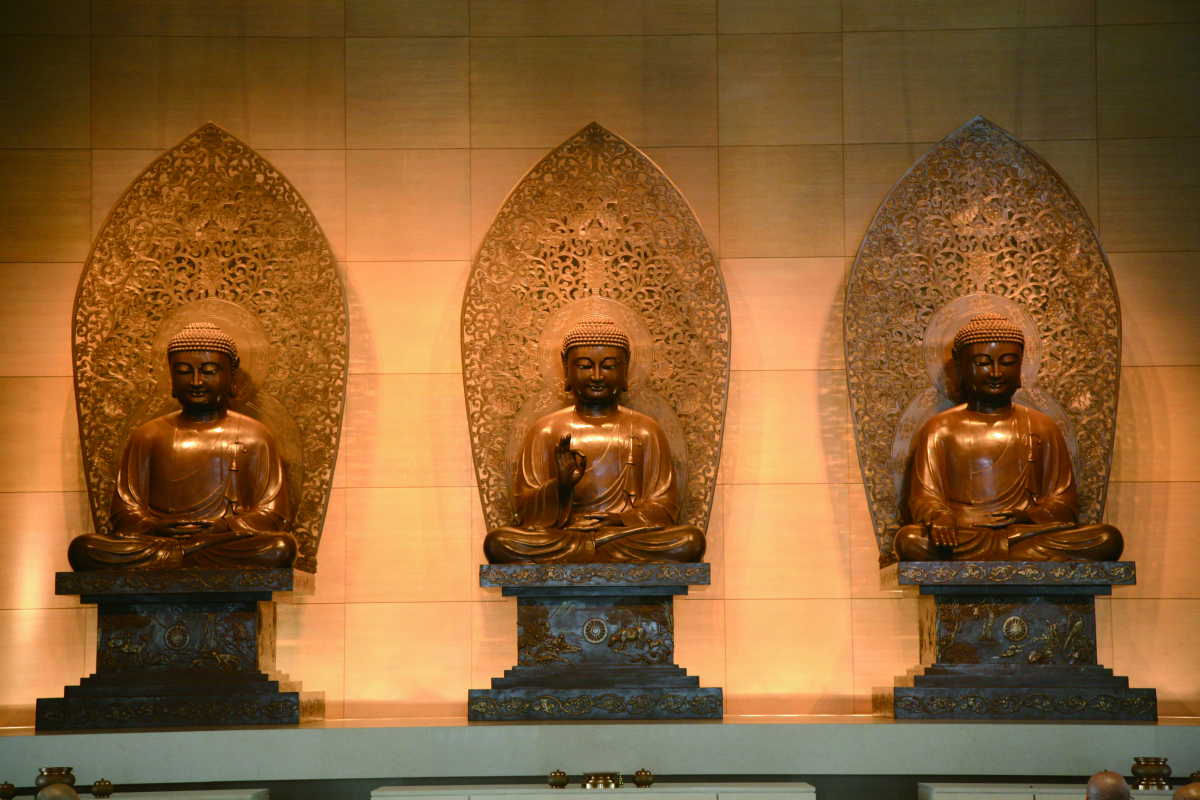Special Topics
Buddhas of the Three Times
An introduction to combinations of Buddhist statues – Three buddhasBuddhas of the three times – the blessings beyond time and space
When walking into the main hall of a Buddhist temple, we often find three Buddha statues sitting on an elevated platform. These three Buddhas are the main objects of veneration in Mahayana Buddhism. However, what are the three Buddhas we refer to? What does each symbolize?
The emergence of the Buddhas of the three times was first mentioned in the Āgama Sutra as "the Buddhas of the past, present and future." The trinity generally has two combinations: the "Buddhas of the Three Times" and the "Buddhas of the Three Jewels."
The Buddhas of the Three Times refer to the three Buddhas of the past, present and future, namely, Dipankara Buddha (or Kassapa Buddha) of the past, Shakyamuni Buddha of the present, and Maitreya of the future. When the three Buddhas are enshrined together in a hall, Sakyamuni Buddha is in the center, with Dipankara Buddha to his left and Maitreya to his right.
The Buddhas of the Three Jewels, also known as the "Buddhas of the Three Directions", refer to the three Buddhas of the Eastern, Central and Western Lands. Shakyamuni Buddha of the Saha World is in the center; on his left side is Medicine Buddha (Bhaiṣajyaguru) of Eastern Pure Land of Azure Radiance (Vaidūryanirbhāsā); and Amitabha Buddha of the Western World of Ultimate Bliss on the opposite side. The name of the "Buddhas of the Three Jewels" implies regarding all the three Jewels (the Buddha, the Dharma and the Sangha) as the Jewel of Buddha, thereby indicating the preciousness of the Buddhas of the Three Jewels.
Common mudrās (symbolic gestures) of the three Buddhas include: the fearlessness mudrā (abhaya mudrā), the impartment-of-Dharma mudrā (dharmachakra pravartana mudrā, also known as the turning-of-the-wheel mudrā), the earth-touching mudrā (bhūmisparśa mudrā, also known as the conquest-of-demon mudrā), and the meditation mudrā (dhyāna mudrā).

Among statues of the Buddhas of the Three Jewels, it is common to see the three Buddhas with the meditation mudrā holding different objects in their hands–such as a bowl or Mani jewel for Shakyamuni Buddha, a medicine bowl or jeweled pagoda for Medicine Buddha, and a lotus platform for Amitabha Buddha. There are also statues of three Buddhas holding three different mudrās: Medicine Buddha holds the Varadamudra (wish-granting mudrā); Sakyamuni Buddha holds the impartment-of-Dharma mudrā; and Amitabha Buddha displays the meditation mudrā, similar to the Buddhas of the Three Jewels in the Grand Buddha Hall of Dharma Drum Mountain World Center for Buddhist Education.
It is uncommon to see side-by-side statues of the Buddhas of the Three Times in temples and monasteries. They are more common in the Yungang Grottoes. The special feature of this combination lies in the fact that the statue of the future Buddha, Maitreya, who is still a bodhisattva, usually sits in a cross-legged pose.
Related articles:
Buddhas and Bodhisattvas in the Pure Lands
The Triad of Sakyamuni Buddha
Three Saints of the Ghanavyūha
Three Saints of the Western Pure Land
Three Saints of the Eastern Pure Land
Buddhas of the Three Times
One Buddha Flanked by Two Disciples
Resource: Issue 402 of Humanity Magazine, Dharma Drum Publishing Corporation
Translation: Sinag-ling Li (李祥苓)
Editing: Keith Brown, James
